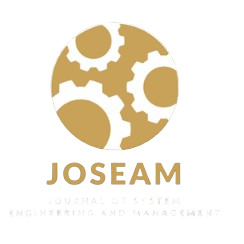Ergonomic analysis of modified sweet potato washing machine
Abstract
Sweet potato is included in the type of palawija plant. Sweet potato (Ipomoea batatas L.) is a source of carbohydrates and sweet potato is widely consumed as a staple food to replace rice. Cilembu Village, Pamulihan District, Sumedang Regency is a center to produce Cilembu sweet potato which has been exported to several countries. Cilembu sweet potato production, especially in the washing process of Cilembu sweet potato, can reach 30 kg/hour. However, the washing process is still done manually in a sitting and bowing position. To increase the cleaning capacity of Cilembu sweet potato, a Cilembu sweet potato washing machine was made. The machine has been modified, but the machine that has been modified needs to be analyzed for its ergonomic feasibility. The purpose of this study was to perform an ergonomics analysis on a modified Cilembu sweet potato washing machine to make it suitable for mass marketing. The method used in this study is a descriptive analysis research method, namely measuring, observing, and calculating the modified sweet potato washing machine and then analyzing the data to obtain machine ergonomics feasibility data. The results showed that the analysis of anthropometric data on machine height was appropriate because the machine height did not exceed the calculated value of the 2.5th percentile, but for machine width there was still a difference between the machine width and the operator's shoulder width because the machine width was smaller than the shoulder width. 50th percentile. The results of the analysis of work postures using the REBA method found 3 postures with a moderate risk level of safety, 2 postures with a high level of security and 1 with a negligible level of safety. On noise and vibration measurements it was found that the machine could only be operated for 3 hours in one day.
Full Text:
PDFReferences
R. A. Pratiwi, “Processing Sweet Potatoes into Various Processed Foods : Review,” J. Trit., vol. 11, no. 2, pp. 42–50, 2020, doi: 10.47687/jt.v11i2.112.
I. Ishaq, A. Yulyatin, and H. Supriadi, "Characteristics of the Diversity of West Java Sweet Potato Genetic Resources,"Bull. Germplasm, vol. 25, no. 2, p. 31, 2019, doi: 10.21082/blpn.v25n2.2019.p31-36.
M. Kiptiah, N. Hairiyah, and H. Susanto, "THE EFFECT OF ORANGE SWEET POTATO FLOUR SUBSTITUTION ON THE QUALITY OF ONION CRACKERS," pp. 143–149, 2021.
N. A. Lestari, "IDENTIFICATION OF TYPES AND ANALYSIS OF WILD PLANT (WEEDS) ON SWEET POTATO PLANTS (Ipomea batatas L)."
C. B. P. Umar, J. F. Kabakoran, and D. S. Hukom, “ANALYSIS OF DIFFERENCES IN LEVELS OF β-CAROTENE IN CRUDE AND BOILED YELLOW SWEET POTATO (Ipomoea batatas L.) USING UV-VIS SPECTROPHOTOMETRY METHOD,” vol. 1, no. 2, 2022.
A. Purwanti, M. E. V. E. Putri, and N. Alviyati, "Evaluation of the Process of Taking Beta Carotene as a Source of Natural Dyes from Yellow Sweet Potatoes,"Pros. Monday. Nas. Tech. Kim. “Struggle,” pp. 1–6, 2020.
H. Mayrowani, "Policies for Provision of Postharvest Coffee Technology and Development Problems,"Researcher Forum. Agro Eco., flight. 31, no. 1, p. 31, 2013.
K. Sugiono, Putro W., Sari,Ergonomics for Beginners Basic Principles and Applications. Malang: UB Press, 2018.
F. Fitra, D. Desyanti, and M. Suhaidi, "Application of student anthropometric data in designing ablution places at SDIT ATH Thaariq – 2 Dumai,"J-ABDIPAMAS (Journal of Community Service), vol. 4, no. 1, p. 1, 2020, doi: 10.30734/j-abdipamas.v4i1.609.
J. Hutabarat, "Basic knowledge of ergonomics," 2019.
DOI: http://dx.doi.org/10.62870/joseam.v2i1.19330
Refbacks
- There are currently no refbacks.

is supported by
This work is licensed under Creative Commons Attribution-ShareAlike 4.0 International



